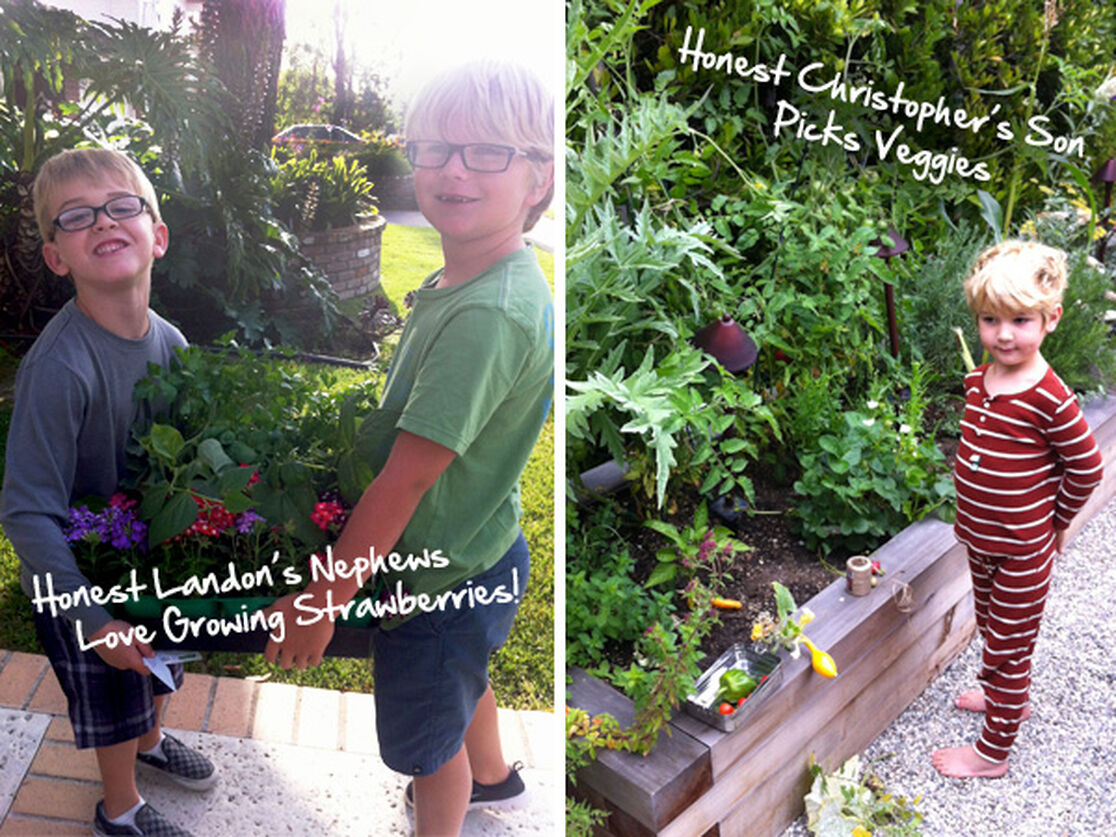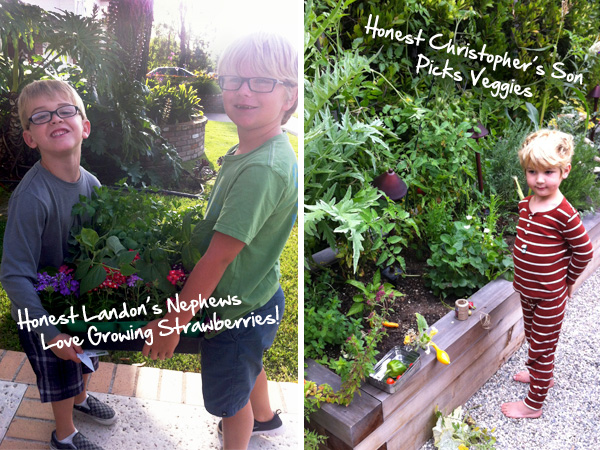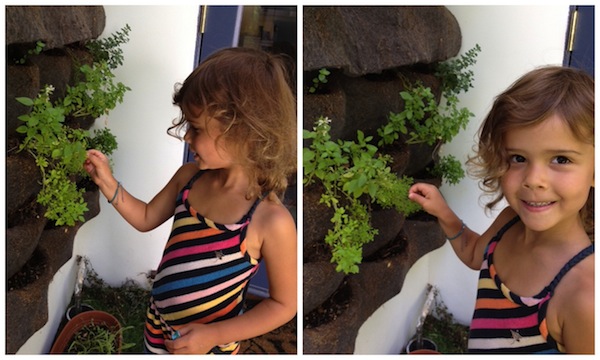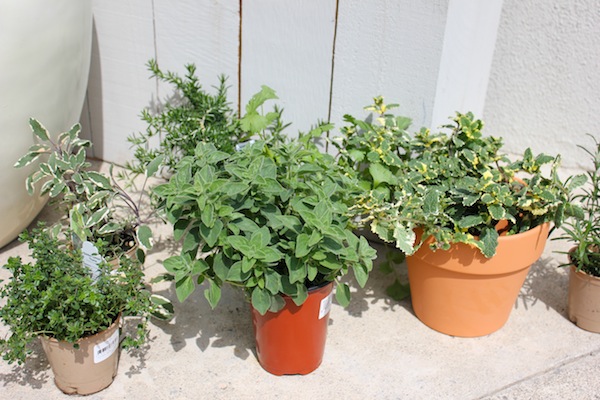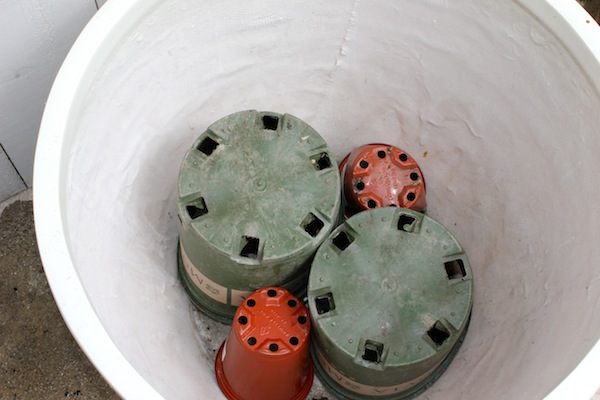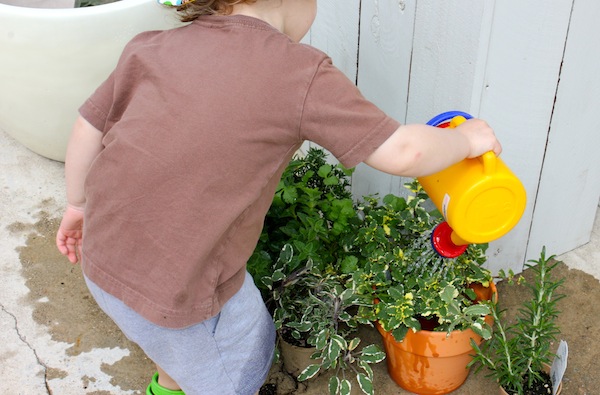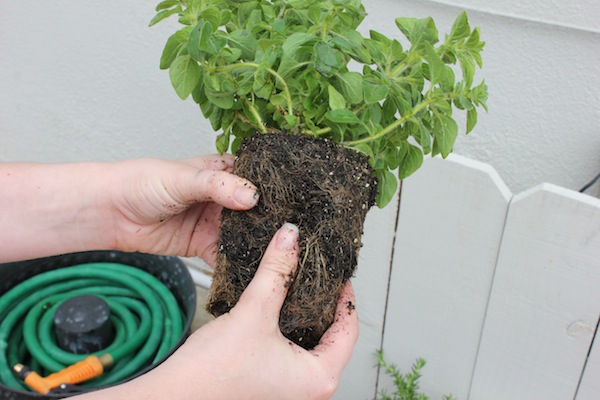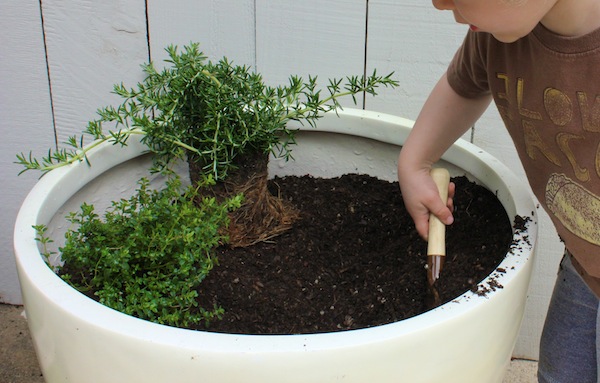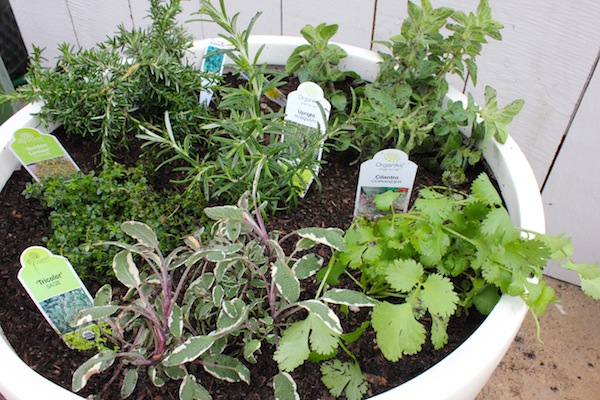Summer and outdoor play—er, dirt—go hand in hand. Or at least that’s what our little explorers’ clothes tell us when they return from their beach, park, and backyard adventures. Yours too?! Because children clearly embrace the philosophy that “a little dirt won’t hurt” and learn through hands-on experience, now’s the perfect time to take advantage of their love of digging and introduce them to gardening.
Now, before we scare you away, we want to emphasize that a green thumb is NOT required to create a garden with your kids. While some of us have the skills of a plant whisperer, most of us have what we’d call black thumbs. And we’ve learned together with our children how to bring a garden to life. The secret to our (surprising) success? Start small with a personal herb garden—they’re low maintenance, spice up your food life, and inspire healthy living.
Planting herbs is a fun, easy way to teach children about where food comes from and the love and care that goes into growing it. The ritual of watering, tracking growth, and cutting sprigs to enjoy at dinner shows them that simple actions can make a big difference. Tending to an edible garden also encourages even the pickiest eaters to make healthy food choices because they’re more apt to try seasoned dishes when they harvest the herbs.
We weren’t kidding about starting small, either. Edible container gardens are great because they don’t require space. A garden can be as simple as a few mason jars to a large pot to vertical wall pockets. This accessible size is very inviting to little ones, makes it manageable for first-time gardeners, and doesn’t require an expansive backyard to enjoy your very own green space.
Here’s how you can make your own container garden (fun and experimentation recommended).
Materials needed: (1) Organic potting soil mixed with all-natural organic fertilizer; (2) Herbs of choice; (3) Planting container of choice; and (4) Small gardening shovel.
Select your favorite herbs from your local nursery, garden center, or big box stores like Home Depot or Lowe’s—organic varieties of rosemary, thyme, sage, oregano, cilantro, and mint make good choices because they’re common to cook with. Mint, though, is best planted in its own pot or wall pocket because it spreads and will overgrow the others.
If using a big pot for your container garden, you can reuse the plastic nursery pots to fill the bottom half to save on the amount of organic potting soil needed while still allowing for drainage. Using discarded wine corks to fill the bottom half also works too (and keeps the pot on the lighter side).
Honest Tip: Containers don’t have to be limited to traditional pots. You can finally repurpose that wine crate sitting in your garage or use the bottom half of milk jugs as planters. Just make sure the container has adequate holes to allow for fast draining soil, which herbs prefer.
Before removing the herbs from the nursery pots, water the plants to saturate the roots and help loosen the soil from the sides of the plastic containers. A trick to easily remove the herbs is to roll the pot on its side while using gentle pressure.
Honest Tip: To get kids involved in gardening, it's about watching and using math to chart the progress—measure growth with a ruler, count the number of new tomatoes, shoots, or leaves…we call it edutainment!
Once out, make sure to separate the roots that have been compacted at the bottom of the pot.
Arrange the herbs equidistant from each other. Dig holes. Place plants so their base is level with top of soil. Cover roots and fill any gaps with the remaining potting soil. You can add worms for soil health and coffee grounds as a DIY fertilizer and soil amender. Next, water.
Honest Tip: Your container garden will do best when it receives about 6 hours of sunlight. But because herbs thrive in sun, make sure to water when the soil looks and feels dry. And prune the dying leaves, so the water goes to the healthy living part and not the dead areas of the plant.
Enjoy in cooking (or as a garnish in your evening drink!).
We aim to provide you with the most honest and credible information possible. This article was reviewed for accuracy by The Honest Team and was written based on sources that are linked at the bottom of the article.
blog_review_statement